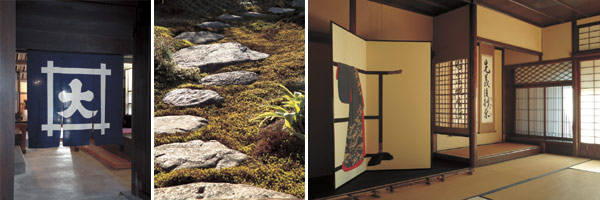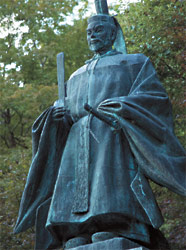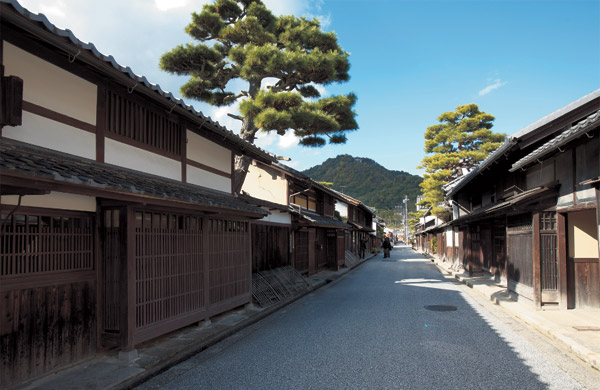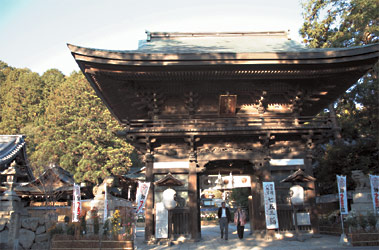Japan Travelogue Omi Hachiman
Biwa-ko, Japan's largest lake, is in the middle of Honshu, and the small city of Omi Hachiman is situated on its southeastern shore. Omi Hachiman is an old castle town going back to the time of Toyotomi Hideyoshi (1537-1598), who unified Japan after years of war and destruction. He made his nephew Toyotomi Hidetsugu the feudal lord of the region. Hidetsugu built his castle on Mount Hachiman, and had a town laid out south of the mountain like a checkerboard. He invited merchants and artisans to set up shop there, and was influential in the construction of major roads and canals.
The Toyotomi family met with disaster soon after, but the town continued to thrive as a center of commerce, thanks to its location near Kyoto on the east-west transportation route, and its strategic position as a center of water transport on Lake Biwa.
Merchants from the area were known as Omi shonin, and some extended their business to different parts of the country and became famous for their success. Omi shonin founded companies that have grown into the huge trading corporations Marubeni and Itochu, and other success stories such as the home goods company Nishikawa Sangyo.
I took a train from Kyoto and got off at JR's Omi Hachiman Station about a half hour later. From the station it was a 5- or 6-minute bus ride to the old town of Hidetsugu.
Shinmachi-dori Street runs north-south through the center of downtown, giving a good view of Mount Hachiman beyond it. More than a dozen old residences of merchants, once wealthy even by Omi standards, still stand on both sides of the street.
I decided to visit one of these, the Former Nishikawa Residence, which is open to the public. I had heard that the Nishikawa family had earned a fortune in the mosquito net and futon business, so I was expecting opulent architecture. But I found everything quite austere inside, except for the high ceilings supported by sturdy beams and shiny black pillars. They seemed to represent the strength of purpose of the Omi shonin, whose motto was "scrimp and save."
Then I headed toward Mount Hachiman and came to Hachiman-bori Moat, which in the old days served as both the inner moat for the castle and a canal leading to Lake Biwa. Both banks are still supported by stone walls, and above those walls are old merchants' houses and warehouses with earthen walls painted white — an excellent location for filming samurai movies and TV dramas.
Himure Hachiman Shrine is at the foot of the mountain. Within the shrine grounds, children were crowding about with their parents, everyone dressed in their finest — they had come for the Shichi Go San festival, to celebrate the good health of the children, aged seven (shichi), five (go) and three (san). The kids' clothes would not have been out of place in a fashion show.

Scenes at the Former Nishikawa Residence
Left: A noren doorway curtain, with the non-dyed part showing the character Dai ("great"), the logo of the Nishikawa family business;
Center: Stepping stones in the residence's well-kept garden;
Right: A beautifully austere room with polished wooden columns and carefully crafted sliding shoji doors. The residence and garden give a good idea of the lifestyle of an affluent merchant family.

In a quiet spot in a park at the foot of Mount Hachiman stands a statue of Toyotomi Hidetsugu (1568-1595), a military commander who met a tragic end at the young age of 28.

